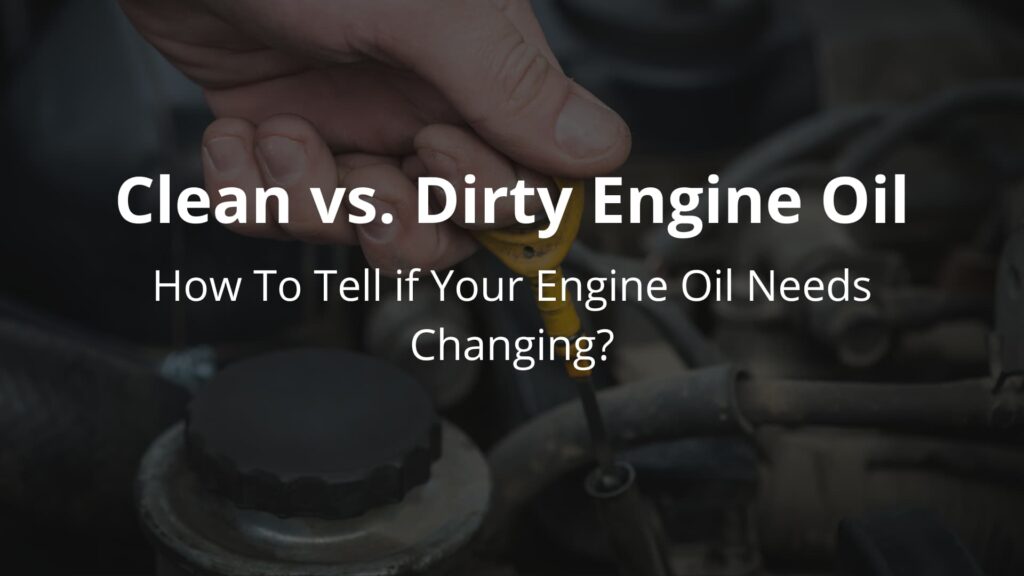What is the right time to change the engine oil? If you ask a mechanic, you will rarely hear no to an oil change, and we all know the reason, don’t we?
They get paid.
Changing oil too frequently adds unnecessary costs, whereas using dirty oil damages your engine. So you need to know the right time.
Let’s learn how engine oil gets dirty and how to compare clean vs. dirty engine oil.
How Does Your Engine Oil Get Dirty?
Engine oil contains additives, anti-corrosives, and lubricants that ensure your car’s engine works seamlessly. However, as time goes on, the engine oil loses its function and collects debris and dirt.
How?
The engine oil faces the brunt of combustion as it has to cool down the engine, which it does by collecting heat from it. The engine oil heats up as a result, and the oil particles start to break down into smaller parts — the higher the temperature, the faster the process.
The decomposed products and environmental dirt and debris make the oil dirty. Put simply, the engine oil gets dirty due to its work — that is, keeping the engine clean.
Typically, it takes 3-6 months for engine oil to get dirty enough to harm your engine. Still, it depends on how and where you drive the car. For instance, if you regularly spend most of the time in city traffic, your engine oil may get dirty quicker.
Clean vs. Dirty Engine Oil: Symptoms
Wondering how to tell the difference between clean and dirty engine oil?
Let’s find out:
1. Impurities
Dirty oil has an abundance of ash, metal particles, carbon residues, water, and other contaminants. On the other hand, clean engine oil is free of all impurities and is composed of detergent and base oils.
2. Viscosity
Dirty engine oil has a higher viscosity than clean engine oil.
What’s viscosity? Viscosity refers to how badly a liquid flows. For example, honey has a higher viscosity than water. Try pouring a bottle of each into a cup and see how slowly the honey moves.
We also call high viscosity liquids thick liquids and low viscosity fluids thin liquids.
Engine oil becomes thicker as it eats up contaminants. You can collect a small sample of oil from the vehicle and see how it flows to determine whether it’s clean or dirty.
3. Texture
Dirty engine oil is dark, sludgy, and gritty in texture due to the build-up of all the residues. While clean oil is smooth, translucent, and has a thin consistency.
4. Color
The color of the clean engine oil ranges from golden amber to reddish-brown. It can vary depending upon the brand and type of engine oil.
On the other hand, dirty engine oil is usually dark brown or black.
What Are the Signs That Your Engine Oil Needs Changing?
The conventional engine oils typically reduce the engine performance after six months of use.
But if you don’t remember the last time you changed your car’s oil or you routinely drive in busy city traffic, you can rely on the following signs:
- Dark and Dirty Oil Color
- Poor Fuel Mileage
- Engine Overheating
- Lag in shifting gears
- Engine Warning Lights
How To Prevent Engine Oil From Getting Dirty?
Regular maintenance is essential if you want to keep your car running smoothly for a long time.
Here are some tips you can follow to prevent engine oil from getting too dirty:
- Change Oil Regularly: The best way to prevent engine oil from getting too dirty is to change it regularly. Depending on your vehicle type, you may need to change your oil every 3,000-5000 miles. You can also check your owner’s manual to determine how often you should change your oil.
- Avoid frequent stop-and-go driving: Try not to use your vehicle for short commutes. That overworks your vehicle and contributes to the production of engine sludge, leading to a hot engine.
- Use an engine sludge remover: An engine sludge remover can help you scrape off all the grit from your engine and prevent your engine’s oil from rapid decline.
- Seek professional help: If you find various signs of engine oil deterioration as given above, seek professional help from a mechanic to clean your engine correctly.
Final Thoughts: Clean vs. Dirty Engine Oil
Dirty engine oil can cost you your hard-earned savings if you don’t change it at the right time.
Reduced engine performance and oil’s color and viscosity are quick signs that tell you when to change the engine oil. Try keeping an eye on the engine’s performance and check your engine oil monthly.
For more engine oil-related information, explore our blog.



